You’ve probably the term “metaverse” a few times over the past months. It’s been a hot topic with several large companies and investors betting big on its future. Spending as much time in the crypto and NFT space as I do, I see the term being used countless times a day.
Despite how much we talk about the metaverse, it’s still surprisingly hard to define. I recently tried to aggregate the leading experts’ perspectives and definitions in this article. My favorite short-form definition is this adaptation of how Matthew Ball has described it:
The metaverse is a massive network of immersive 3D virtual worlds which can be experienced in real time by an effectively unlimited number of people.
The fact is that we’re still trying to define what exactly the metaverse is. This highlights how early we still are, which in turn means that we’ve got a great investment opportunity on our hands. It also means that the investment is about as risky as it gets.
There are countless companies, cryptocurrencies, and NFT projects positioned for very tangential exposure to the metaverse. I will ignore those for now and instead focus on the ones with more direct exposure, although many of the ones I cover aren’t pure metaverse investments by any means.
As always, this isn’t financial advice and investing in any of this is extremely risky. The metaverse may never materialize and we certainly don’t know which form it might take. If it does materialize, however, I believe the asset classes covered below are some of our best investment opportunities.
Metaverse land
Most people agree that we’ll have many of our future metaverse experiences in immersive virtual 3D worlds. Probably wearing our VR headsets. These worlds are likely made up of virtual “land”, whether it be in the form of an open field, a plot in a dense city, or a floor in a highrise.
It’s on these virtual plots of land that developers will build their stores, stages, schools, and venues. Basically, build whatever they can imagine enhancing our digital lives. Several such virtual worlds are already in development.
The Sandbox and Decentraland are two of the leaders in this space. They each consist of roughly 100,000 plots of land. Other incumbents include NFT Worlds, World Wide Webb, Somnium Space, and the highly anticipated Otherside by Yuga Labs, set to launch in the very near future.
The investment case for virtual land is the same as for the real-world type: Certain worlds will be more popular than others, just as certain countries and cities are more popular than others. Because the land is finite, each plot will increase in value along with the demand.
Furthermore, certain plots of land are more valuable than others. A larger plot is naturally more expensive than a smaller one. A central location is probably better as well. And perhaps you pay more for a beachfront property.
But your neighbors matter as well. Being next to the most popular meetup spot in Decentraland could be worth a lot of money as it’ll potentially bring a lot of awareness and foot traffic to your location.
Some people will contest all of this though. New virtual worlds are created all the time and they can easily be expanded with new plots of land. This ruins the scarcity factor. Location doesn’t matter either as we can easily see and “move” to any place on a map with the click of a button.
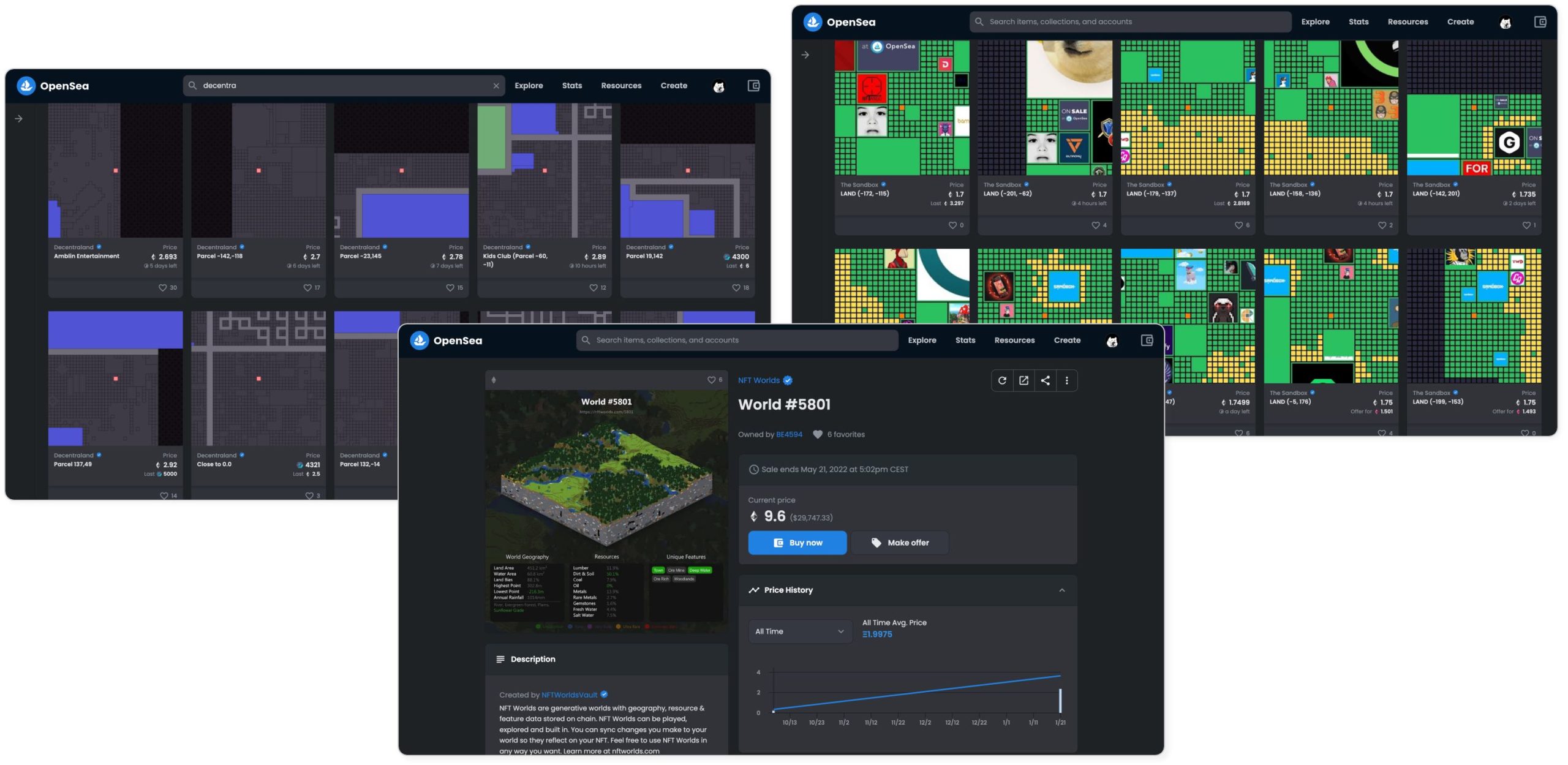
Land plots from Decentraland, The Sandbox, and NFT Worlds for sale on OpenSea
I’m personally undecided on the matter and don’t understand each virtual world well enough to have a strong opinion. What’s clear is that many of these virtual plots of land have been great investments in the past. Whether or not you buy a plot, it’s a foundational metaverse concept to understand.
Metaverse land to explore
Metaverse tokens
Many of the virtual worlds covered above have their own native crypto tokens. These are typically used as a medium of exchange inside each world. The Sandbox has its own $SAND token, Decentraland has $MANA, NFT Worlds has $WLRD, and so on.
As the activity inside a given virtual world goes up, so does the demand for its native currency. And so does its value. At least that’s the idea.
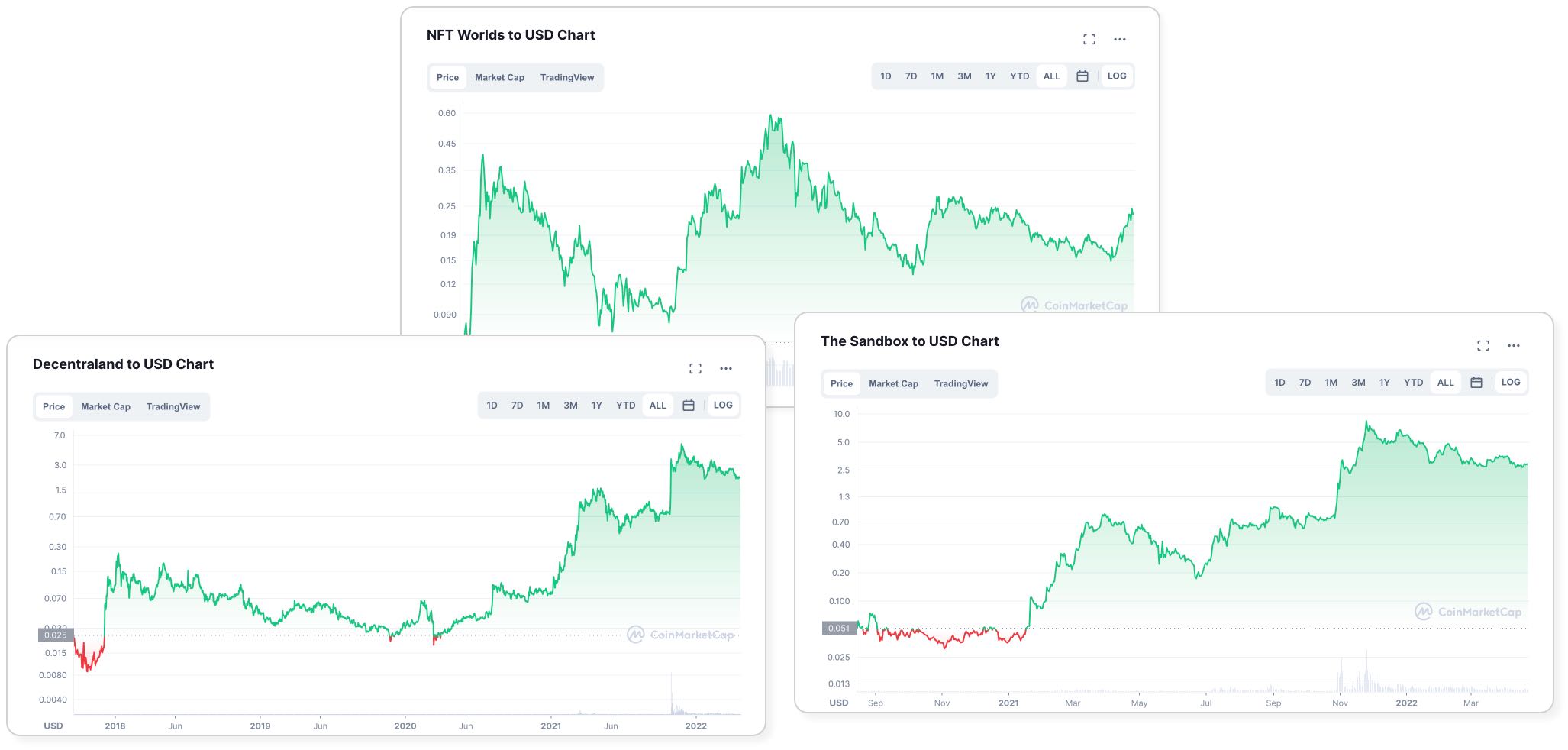
Metaverse tokens have been great investments over the past few years
Just like the virtual land plots, many of these tokens have been excellent investments in the past. Time will tell if this trend continues and which tokens will perform the best.
Metaverse tokens to explore
- $SAND (The Sandbox)
- $MANA (Decentraland)
- $WRLD (NFT Worlds)
- $CUBE (Somnium Space)
- $APE (Yuga Labs / The Other Side)
- $AXS (Axie Infinity)
NFT avatar projects
Many NFT avatar projects have big ambitions for the metaverse. They want to build virtual spaces for community events, meetups, and talks, and for their members to just hang out and socialize. Much of this will only be for avatar owners of a given project who will also be able to show up as their avatars.
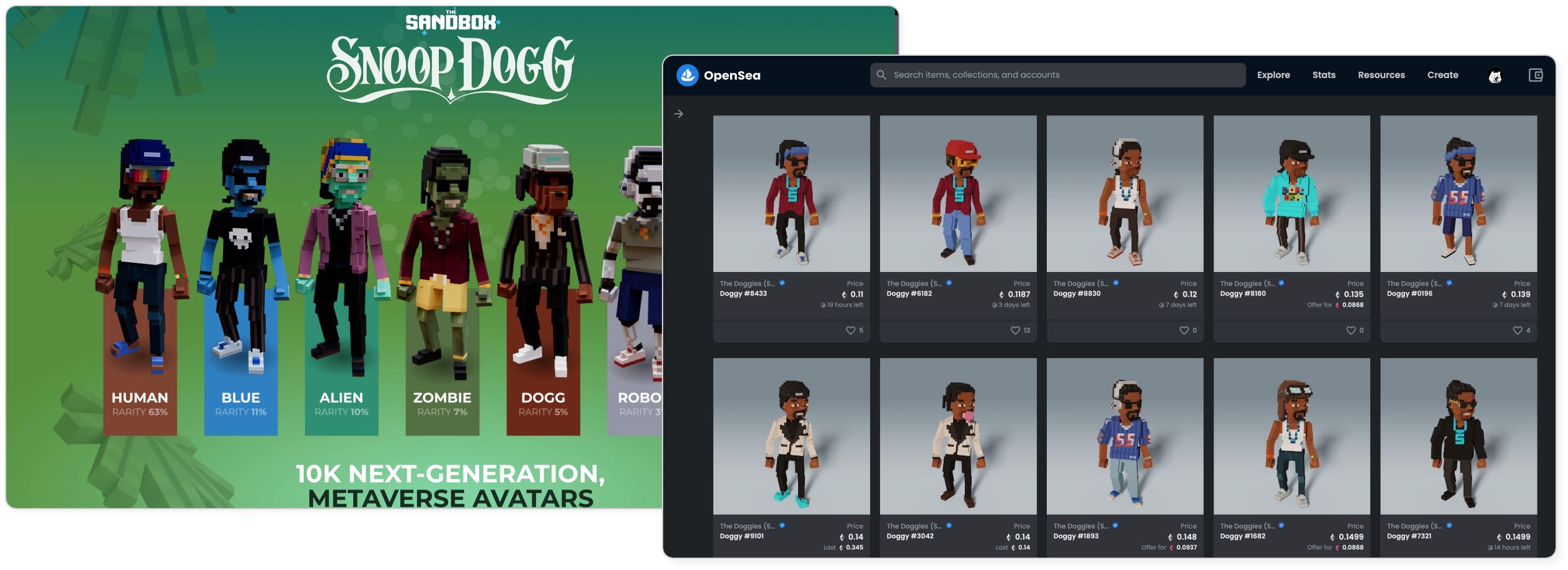
Snopp Dogg is one of the celebrities who have embraced the metaverse
At this moment in time, it feels like almost all avatar projects want to create something in the metaverse. Their ideas vary a lot though. Some are building their own virtual worlds or games, others are building inside of the existing ones covered above.
I’d recommend exploring a range of different projects and seeing what they have on their roadmaps. Pick the ones with the most interesting plans and the right teams to deliver. I’ve mentioned a few of my own NFTs below.
NFT avatar projects to explore
- The Doggies (Snoop Dogg)
- Ethaliens
- Forest Spirits
- Sherbet
Blockchains
All the virtual worlds, their respective tokens, and the NFT avatar projects mentioned above are built on blockchain technology. Most of the leading ones are created on the Ethereum blockchain. Others are built on Solana, Terra, WAX, Tezos, and the BNB Smart Chain, to name a few.
As the activity on these blockchains increases, so does the value of their native cryptocurrencies. At least in theory and over the long term. We’ve seen many of them outperform the broader crypto market in the recent past.
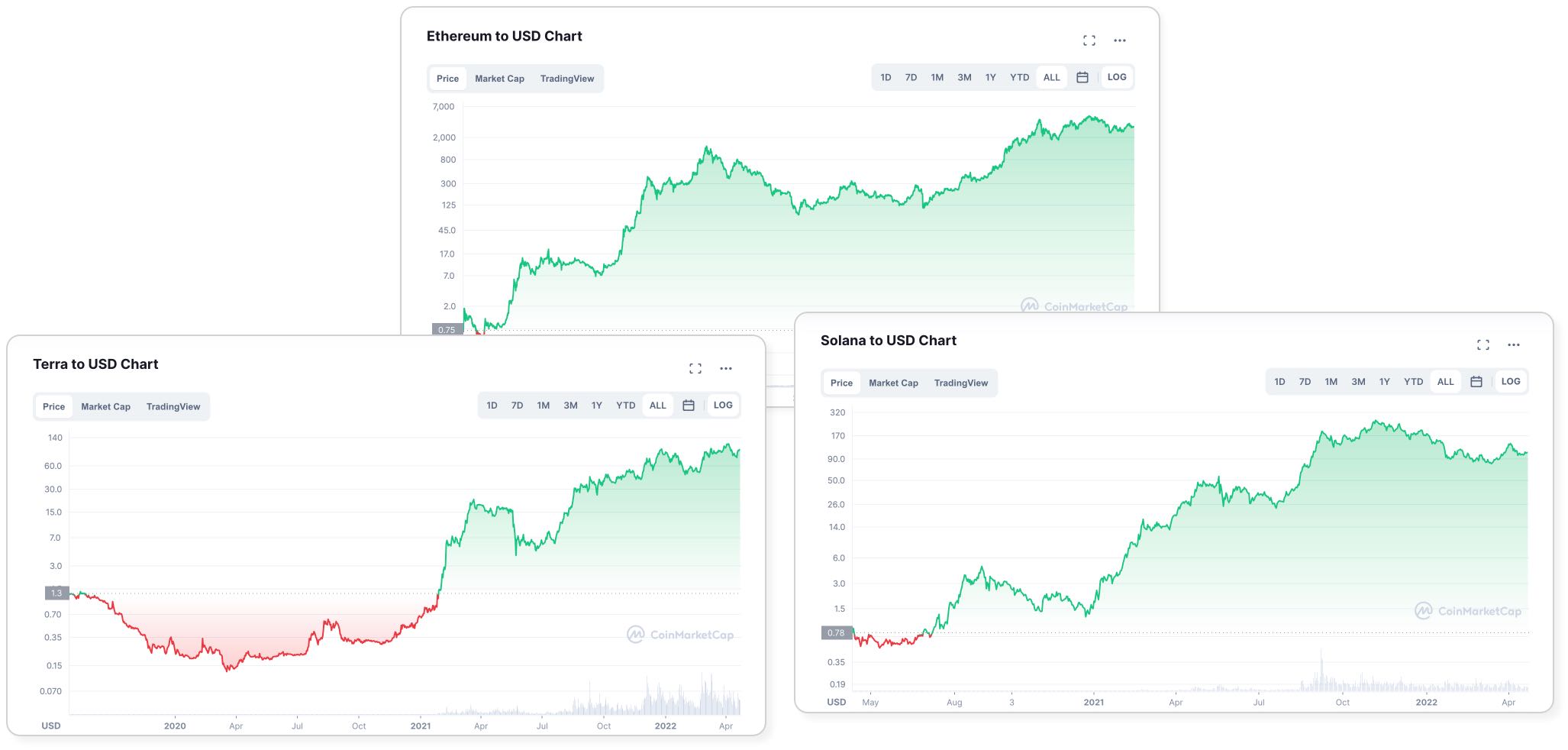
Blockchains like Terra and Solana have been some of the best crypto investments recently
These blockchains aren’t direct metaverse investments as they’re also being used for lots of other applications. This includes DeFi (decentralized finance), gaming, and file storage, for instance.
On the other hand, Ethereum will benefit regardless of who ends up winning the virtual world battle. You don’t have to pick a favorite among The Sandbox, Decentraland, and all the other virtual worlds fighting for market share. That’s what makes these blockchains such an appealing investment.
Blockchains to explore
- Ethereum ($ETH)
- Solana ($SOL)
- BNB Chain ($BNB)
- Terra ($LUNA)
- Avalanche ($AVAX)
- WAX ($WAX)
- Tezos ($XTZ)
Ethereum scaling solutions
When it comes to blockchain ecosystems, Ethereum is the undisputed leader. It does come with some limitations though. Ethereum easily gets congested when the network activity spikes, causing transaction fees to go through the roof. Scaling solutions are meant to solve this.
Ethereum is known as a “layer 1” blockchain. Layer 2 blockchains and side chains have been created to handle transactions in a much more efficient way. Some of the leaders in this field are Polygon ($MATIC), Immutable X ($IMX), and Loopring ($LRC).
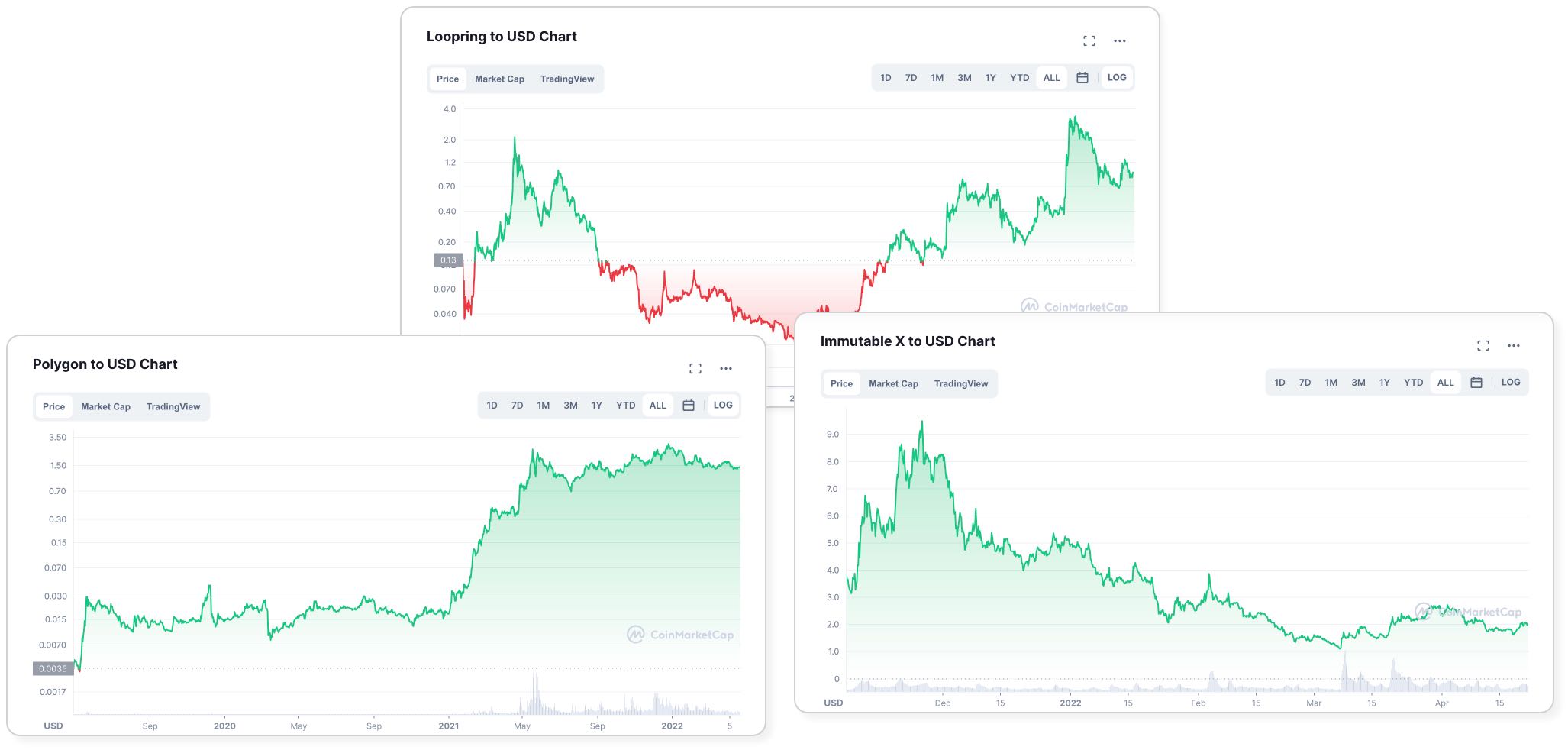
Polygon has so far been the clear leader among the Ethereum scaling solutions
Just as Ethereum and the other layer 1 blockchains, these scaling solutions aren’t direct bets on the metaverse. They’re just as suitable for DeFi, gaming, and NFTs. They have gained some serious traction and value over the past months though, and they’re definitely worth a closer look.
Scaling solutions to explore
Metaverse stocks
The metaverse is no longer a fringe idea among crypto enthusiasts. Roblox has been creating immersive virtual experiences for years. Many large companies have now included the metaverse in their business strategies and even made their first moves in that direction.

Meta’s contribution to the metaverse consists of Horizon Home, Worlds, and Workrooms (source: Meta)
The most obvious example is Meta, formerly known as Facebook. Mark Zuckerberg has big plans for the metaverse and wants to lead the charge. His acquisition of Oculus in 2014 and the recent name change say it all.
Nike opened their metaverse store, Nikeland, in November last year. A month later they acquired RTFKT, a studio specializing in digital sneakers and other artifacts. They’re also the creators of CloneX mentioned earlier. And Adidas doesn’t want to be left behind.
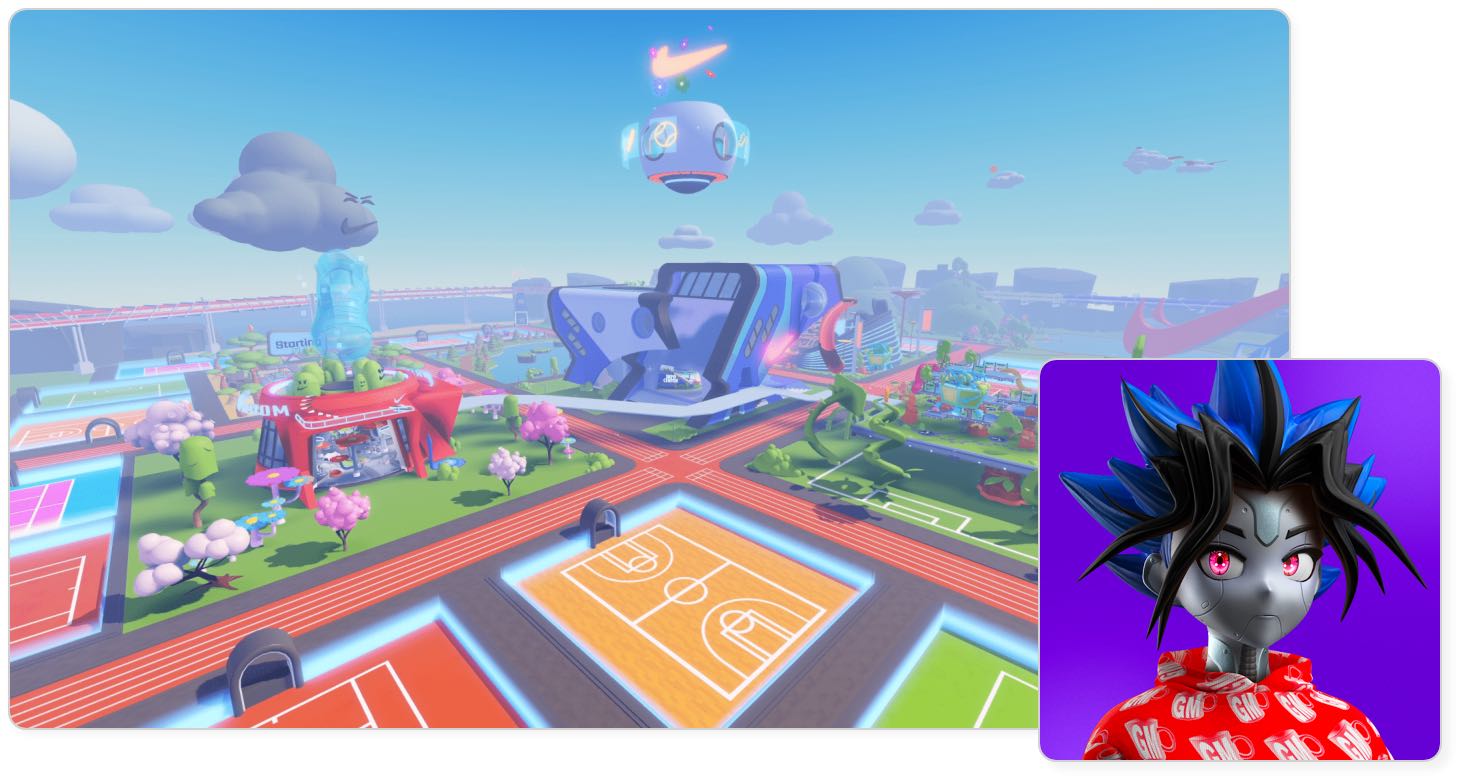
A view of Nikeland in Roblox and one of the CloneX avatars
Match Group, the company behind Tinder, wants to take its match-making efforts to the virtual world. This includes avatar-based virtual experiences, a virtual currency called Tinder Coins, and the virtual world Single Town.
Companies like Nvidia, Unity, and Cloudflare provide the infrastructure, software, and security that companies need to build in the metaverse. You can easily google your way to a lot more “metaverse stocks” like these.
Metaverse stocks to explore
- Roblox ($RBLX)
- Meta ($FB)
- Nike ($NKE)
- Match Group ($MTCH)
- Nvidia ($NVDA)
- Unity ($U)
- Cloudflare ($NET)
Metaverse indexes
I’m personally a big proponent of index investing as opposed to trying to pick individual winners. Luckily for us, we also have some opportunities to do this for our metaverse investing! Although they all come with some tradeoffs.
There are actually several metaverse ETFs (Exchange-Traded Funds) available on the stock market. Some of the leading ones are Amplify Transformational Data Sharing ETF, Fount Metaverse ETF, Roundhill Ball Metaverse ETF, and Evolve Metaverse ETF.
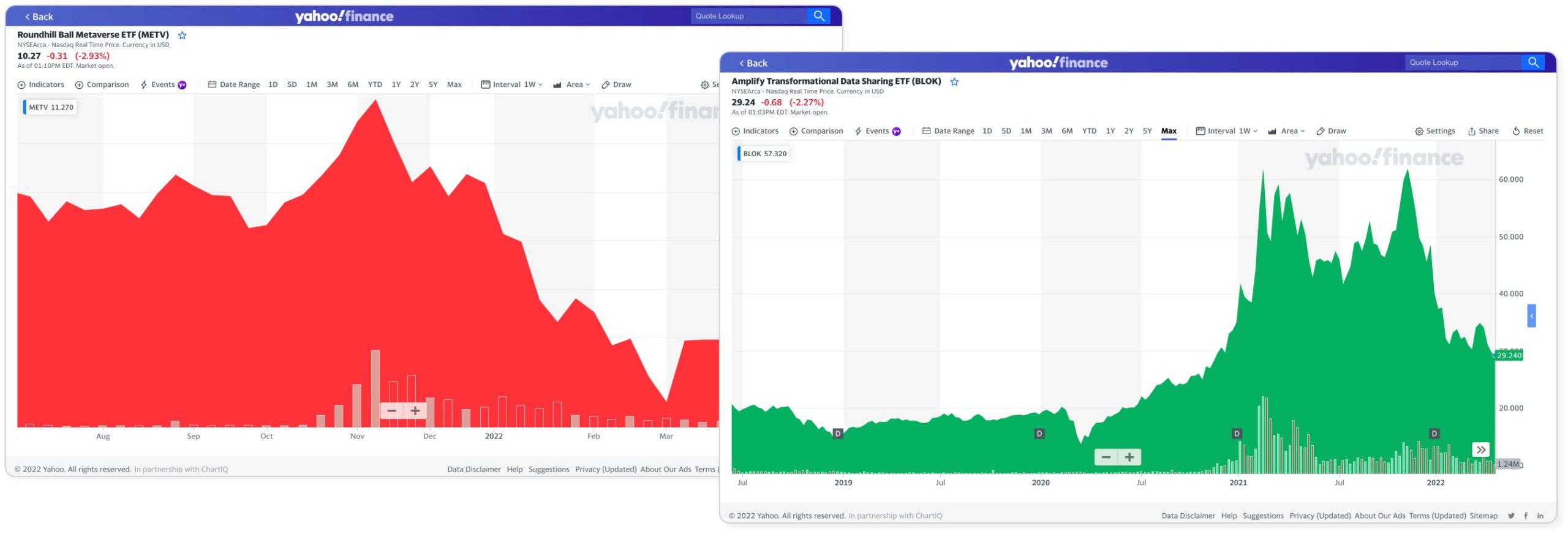
New metaverse ETFs like $METV launched during the hype in 2021 and have since dropped in value
These ETFs come with the obvious downside of only including publicly traded companies, aka stocks. If you do want exposure to metaverse stocks though, one of these ETFs could be a great way to get it.
Looking beyond the stock market, our best option right now is the Metaverse Index. You can buy it right now as a crypto token ($MVI) on Uniswap, Hoo, or BKEX. Unfortunately, the index is compiled with some very limiting criteria.
First up, while ETFs exclude all-things crypto, the MVI excludes all stocks. Thus, investing in an ETF and the MVI could seem like a good solution if it weren’t for the next criteria.
This one is a little more concerning: Only Ethereum-based crypto tokens are allowed. It’s only a little more concerning because most of the metaverse development is happening on Ethereum anyway. I don’t like to simply exclude all other blockchains like that though.
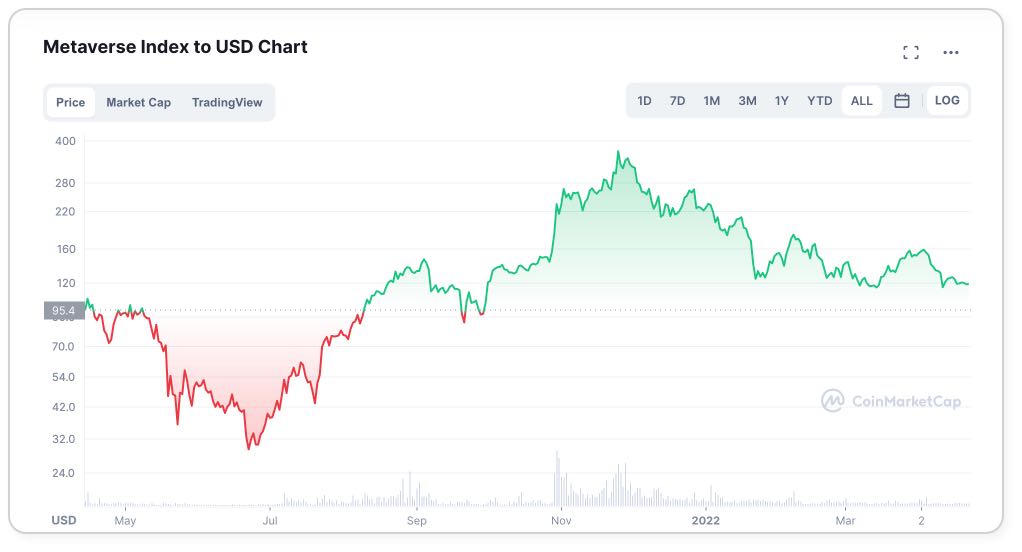
The Metaverse Index has been volatile but is slightly up since its inception in April 2021
What’s most concerning to me is simply the tokens that are in the index. Aside from Decentraland and The Sandbox, I wouldn’t classify any of the 16 tokens in the index as actual metaverse tokens. I own many of them myself but treat them as part of my gaming and NFT portfolios. Take Rarible and Audius, for instance, an NFT marketplace and a music streaming service.
So while I really like the idea of a broad metaverse index, our option on the crypto side isn’t worth it at the moment. I encourage you to keep an eye out for new opportunities though. Someone will get it right eventually. And in the meantime, consider one of the leading metaverse ETFs.
Indexes to explore
- Amplify Transformational Data Sharing ETF ($BLOK)
- Fount Metaverse ETF ($MTVR)
- Roundhill Ball Metaverse ETF ($METV)
- Evolve Metaverse ETF ($MESH.TO)
- Metaverse Index ($MVI)
Closing thoughts and a note on gaming
As you can tell from reading this article, we’ve got lots of ways to invest in the metaverse revolution. Which of them is right for you will depend on your own situation, risk tolerance, starting capital, and a myriad of other factors.
I want to wrap this up with a note on gaming as you can certainly argue that immersive open-world games fit the metaverse definition. But, as I already mentioned, I personally view it as its own separate category.
There are a lot of new games being built all the time, especially the crypto-native kind. These games also present a range of investment opportunities which I plan to cover in-depth in some upcoming articles. If you’re curious about the topic, it’s definitely worth doing some research in the meantime.
